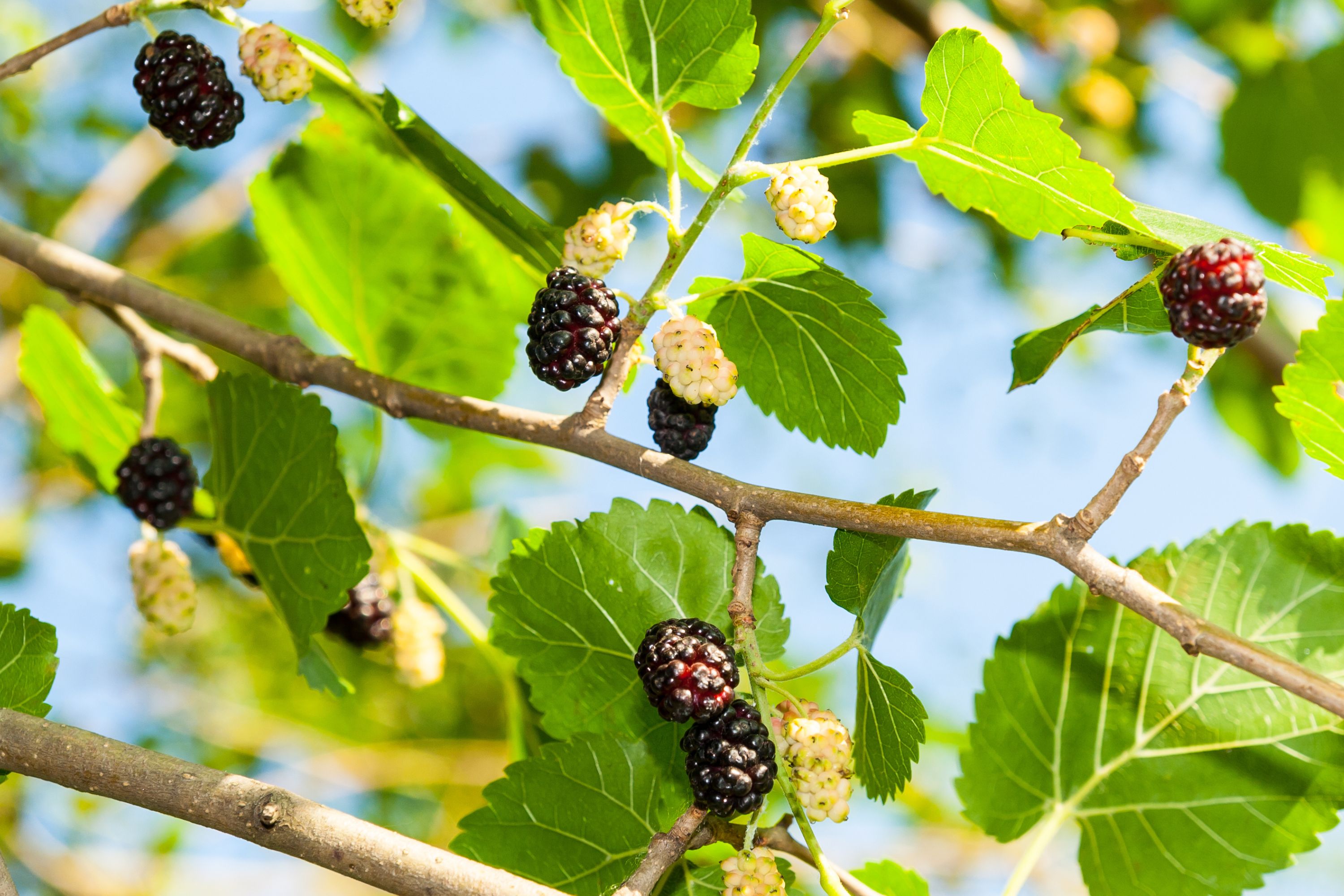Black mulberry
(Morus nigra)

Description
Morus nigra, called black mulberry or blackberry (not to be confused with the blackberries that are various species of Rubus), is a species of flowering plant in the family Moraceae that is native to southwestern Asia and the Iberian Peninsula, where it has been cultivated for so long that its precise natural range is unknown. The black mulberry is known for its large number of chromosomes, 308 (44x ploidy). Sometimes other mulberry species are confused with black mulberry, particularly black-fruited individuals of the white mulberry. Black mulberry may be distinguished from the other species by the uniformly hairy lower surface of its leaves. Mulberry fruit color derives from anthocyanins. Morus nigra is a deciduous tree growing to 12 m (39 ft) tall by 15 m (49 ft) broad. The leaves are 10–20 cm (4–8 in) long by 6–10 cm (2–4 in) broad - up to 23 cm (9 in) long on vigorous shoots, downy on the underside, the upper surface rough with very short, stiff hairs. It has 308 chromosomes. The edible fruit is a compound cluster of several small drupes that are dark purple, almost black when ripe, and they are 2–3 centimetres (0.8–1.2 in) long. Black mulberry is richly flavoured, similar to the red mulberry (Morus rubra) rather than the more insipid fruit of the white mulberry (Morus alba).
Taxonomic tree:







